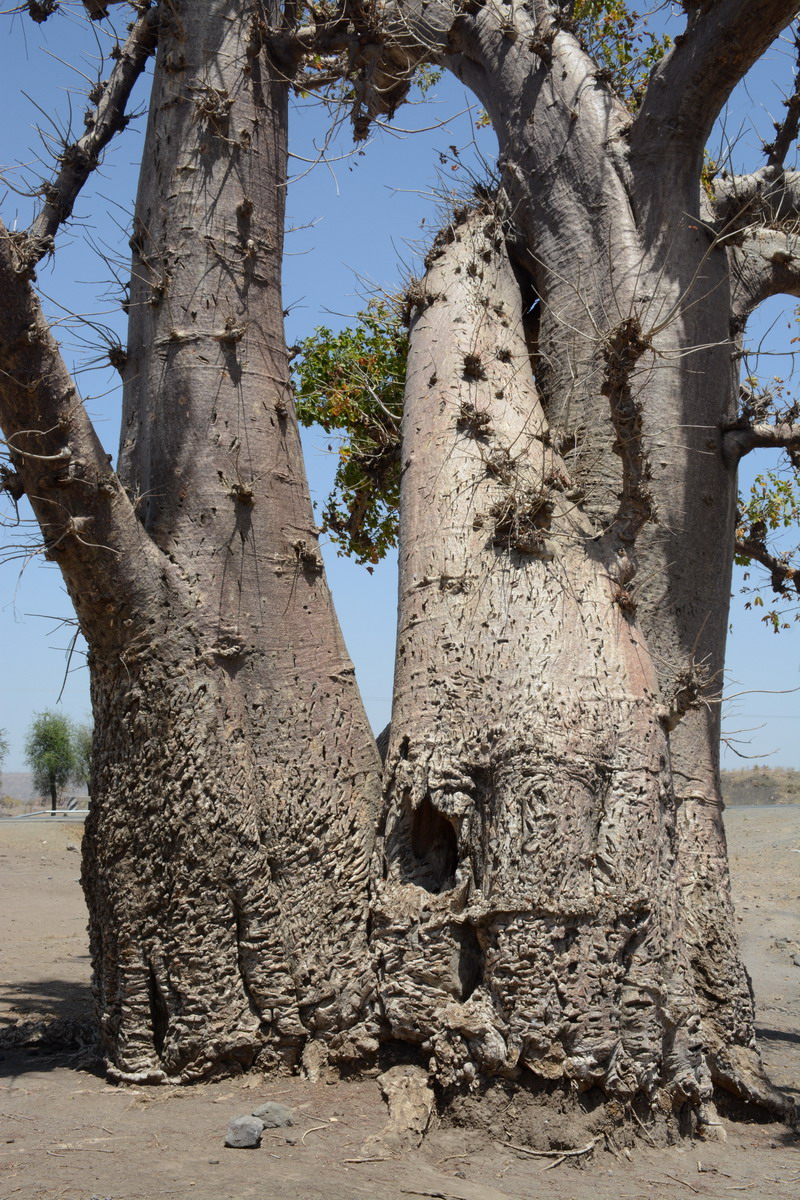- Home
- Publications
- PAGES Magazine
- African Tree Ring Network For Resilience: Revealing Climate Change Patterns and Their Impacts Across Wider Spatial-temporal Scales
African Tree Ring Network for Resilience: Revealing climate change patterns and their impacts across wider spatial-temporal scales
Aster Gebrekirstos, H.G. Gracias, J. Ngoma, M. Mokria, L.H. Balima, A.O. Patrick and E.A. Boakye
Past Global Changes Magazine
31(2)
113
2023
Aster Gebrekirstos1,
H.G. Gracias2,
J. Ngoma3,
M. Mokria4,
L.H. Balima5,
S. Kapoury6,
A. O. Patrick7 and
E. A. Boakye8
H.G. Gracias2,
J. Ngoma3,
M. Mokria4,
L.H. Balima5,
S. Kapoury6,
A. O. Patrick7 and
E. A. Boakye8
Tree-ring-based proxies have been widely used in ecology and climate change studies for centuries (Fritts 1976), particularly in temperate regions. As trees grow, changes in environmental factors are recorded in the wood produced during specific time periods. Consequently, trees are key terrestrial archives, providing reliable insights into past climate and environmental variability on a year-by-year basis at local to regional scales, given that they can form annual rings and grow for hundreds of years (Fig. 1).
 |
|
Figure 1: Baobab tree from Western Tigray (Ethiopia) that can grow for hundreds of years. Photo credit: Aster Gebrekirstos. |
Tree rings enable the use of precise dating methods, and provide high-resolution paleoenvironmental information through different proxies. With the development in technology, tree rings are also important indicators of plant physiological responses to changing climatic conditions and for further understanding of long-term ecological and hydroclimatic processes. Given the versatility of dendrochronology, and the diversity of environmental questions that can be addressed, the field continues to grow with new frontiers and advances in technology. Methods that are applied to decode minutes, decades to multi-centuries of information include tree-ring analysis, wood anatomy, stable isotopes and dendrometers. The results provide insight into current and past climate and environmental variability at seasonal and annual resolution, and from local to regional scales. Tree-based information, therefore, elucidates climate change impacts on tree growth and provides evidence and data to help understand long-term climate and ecological processes (Gebrekirstos et al. 2014)
Scientific goals and objectives
Many livelihoods, economic activities and energy sources in Sub-Saharan Africa (SSA) are largely dependent on climate-sensitive natural resources. The climate crisis is increasing the frequency and intensity of floods, droughts, and heatwaves, with Africa expected to be among the global regions hit hardest (Tzachor et al. 2023). As climate impacts continue to negatively affect the population, economy and ecosystems in Africa, there is a need to increase scientific and research capacity and facilities on the continent. Establishing the African Tree Ring Network (ATRN) working group (WG) (pastglobalchanges.org/ATRN) is, therefore, an opportunity to advance the use of tree rings in the tropics, particularly in Africa in the fields of, for instance, paleoecology/hydroclimatology, forestry/agroforestry, biodiversity, ecophysiology, and restoration ecology, as a new frontier.
In recent years, dendrochronology in Africa has experienced a rapid expansion and is beginning to fill important gaps in existing tree-ring based data that is dominated almost exclusively by temperate regions (Gebrekirstos et al. 2014; Zuidema et al. 2022). For instance, based on tree-ring widths in Juniperus procera in Ethiopia, Mokria et al. (2017) reconstructed hydroclimate variability over the past 350 years. Gebrekirstos et al. (2009) also characterized co-occurring savanna species into opportunist and resilient species based on their response to rainfall variability.
A combination of tree-ring width and stable isotopes are also used to address questions related to water-resource management, agroforestry and climate-forest management feedbacks. For example, these techniques have been used to reconstruct changes in surface hydrology (Mokria et al. 2018), to determine which species is more productive, resilient and drought tolerant (Gebrekirstos et al. 2009), which species sequester more carbon (Sanogo et al. 2016), and to better quantify the carbon sequestration by tropical trees and forests (Zuidema et al. 2022). Yet this science is the least developed on the globe.
The main scientific objective of this WG is, therefore, to bring together African tree ring scientists and take stock of the development in terms of science, methods, data, human capacity, and facility on the continent. We will analyze the challenges and opportunities to advance tree-ring-based science in different environments and climate zones across the continent. We will provide improved methods, approaches, and best practices to enable cross-regional data analysis and synthesis to support informed decision-making on pressing environmental questions and climate issues, considering the diverse effects on African ecosystems.
We will organize meetings and workshops, field training, and citizen science initiatives to increase awareness in collaboration with international and regional partners, policy makers, and donors. We will also create a link between the tree ring, modeling, and multi-proxy communities to develop a vibrant network and advance scientific capacity in the continent, and beyond.
Upcoming activities
Visit the ATRN website at pastglobalchanges.org/ATRN and sign up to the mailing list for all information, news and activities. Send us an email to become a member of the ATRN working group.
affiliationS
1CIFOR-ICRAF, Center for International Forestry Research and World Agroforestry, Nairobi, Kenya
2Faculty of Agronomic Sciences, University of Abomey-Calavi, Benin
3The Copperbelt University, Department of Biomaterials Science and Technology, School of Natural Resources, Kitwe, Zambia
4CIFOR-ICRAF, Center for International Forestry Research and World Agroforestry, Addis Ababa, Ethiopia
5Laboratory of Plant Biology and Ecology, Ouagadougou, Burkina Faso
6Institut d'Economie Rurale (IER), Point Focal de la biodiversité des ressources génétiques pour l'alimentation et l'agriculture, CRRA-SOTUBA, Bamako, Mali
7Osun State University, Osogbo, Nigeria
8Working Group on Forest Certification, Kumasi, Ghana
contact
Aster Gebrekirstos: a.gebrekirstos cifor-icraf.org
cifor-icraf.org
references
Fritts HC (1976) Tree Rings and Climate. Academic Press, 582 pp
Gebrekirstos A et al. (2009) Glob Planet Change 66 (3-4): 253-260
Gebrekirstos A et al. (2014) Curr Opin Environ Sustain 6: 48-53
Mokria M et al. (2017) Glob Change Biol 23: 5436–5454
Mokria M et al. (2018) Quat Sci Rev 199: 126-143
Sanogo K et al. (2016) Dendrochronologia 40: 26-35
